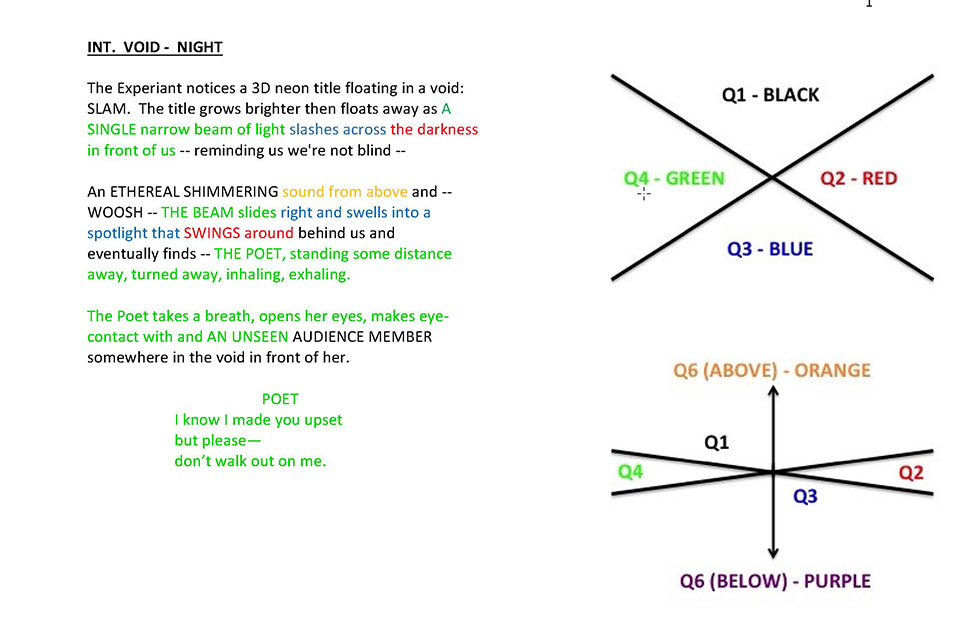A few years have passed since we first strapped on our office virtual reality (VR) headset and experienced museum tours, animated rollercoaster-induced motion sickness, and clowns that lunge, screaming, at your face. In fact, Steve’s nauseating experience of a runaway mine cart led him to conclude that businesses should focus on the reality of the experiences they create rather than getting carried away with the virtual component.
The novelty wore off quickly in the office – and the same can apply to new ways of B2B marketing. But it’s undeniable that extended reality (XR) has become more accessible for consumers and tech firms alike. The connected virtual world is receiving significant investment. It has a name – the metaverse – that’s seeped into the public subconscious, and marketers are exploring novel ways to use it for customer engagement.
Though it might seem like virtual environments are created by a team of developers and 3D animators, persuasive and compelling copy will still be needed to guide visitors’ journeys.
So, how should writers approach it?
Three questions for virtual scriptwriters to consider
While XR-based marketing is very much the new kid on the block of content formats – particularly in the B2B space – people are doing some genuinely interesting (and useful) things with it, from digital twins to try-before-you-buy e-commerce.
There’s even a dedicated VR marketing solution, which big hitters like GE and Cisco are using to showcase 3D models of inaccessible products, such as oilfield generators and network convergence systems.
This means we’re creeping towards a time when XR becomes a viable format for clients to experiment with – particularly as the range of tech that can deliver virtual or augmented experiences widens.
Here are three questions copywriters should keep in mind when a client first approaches them with an immersive concept and the mighty weight of an animation studio but no script to go along with it.
1. How will the user experience the… uh… experience?
XR isn’t solely for those who can sink an obnoxious amount of money into the latest headsets. It comes in all forms, from complicated rigs that look like Star Trek props to cardboard self-assembly kits that you clutch to your face. Even browser-based applications can provide interactive smartphone experiences.
That means two things:
- XR is more accessible (and portable) than ever, which is ideal for driving down the cost of experimenting with the tech
- You’ve got to be aware of how people are going to interact with your experience
Even with the more comfortable next generation of head-mounted VR sets you can write longer experiences for, you don’t want to trap your audience in a five-hour epic about supply chain management. Keep your messaging short and sweet.
2. Are your users observers or protagonists?
The narrative of your experience depends massively on the role your customer/client/person you’ve accosted at an expo is playing in the virtual space.
Observers don’t actively participate in the experience – they’re just there to watch and (hopefully) learn. They need a linear narrative so that you can sit them in a server room or the passenger seat of a field service vehicle and have the story happen around them.
Protagonists, however, get their hands dirty and interact with the environment. So, give them things to play with and different paths to follow. This requires a more nuanced approach to writing. If you’re not in control of where your protagonist is heading next, you need to ensure they can still get the full story, however they explore the experience.
An important thing to remember is: unless you really want to mess with your observer or protagonist, you shouldn’t switch between perspectives during your experience. You’re trying to introduce them to a product, not give them a raging headache.
3. How are you communicating with the user?
In XR, you shouldn’t talk at your user. Well, you could, but that’s not especially exciting (they can probably get that level of experience from a YouTube video).
It’s also very easy to overwhelm someone in virtual reality, particularly if it’s their first experience. Be patient with them, and don’t give them too many things to focus on at once – particularly if you want them to learn something.
Think carefully about the different ways you can tell your story – and how you can guide users’ journeys. Where’s that voice coming from? Where’s the action happening? Cue users to what they should be looking at or interacting with next, whether by a character getting their attention or just a big ol’ sign that says, “LOOK OVER HERE”.
In a virtual world, you can’t guarantee that your user will look in the right direction. In fact, you can almost guarantee they won’t.
If you’ve written a video before, it’s unlikely that writing a VR script will be a wild departure from what you’re used to. But now you’ll have to add in consideration for six – yes, six – different planes. Up, down, right, left, back, and front.
Your scripts might end up looking a little like this:

Sample page from the screenplay for “Slam” by Aja Cooper and Gary Tieche. (Original here.)
Are we in the age of virtual B2B marketing?
Well, perhaps. We can’t control whether XR for B2B will thrive or fizzle. But with a few ideas in our back pocket for how to get started, we’ve got a better chance of turning one of the most interesting new technologies into one of the most engaging new content formats.
Whether you’ve got a finely polished concept ready to go or just a coffee-stained napkin idea, if you need some writers to turn it into a glorious multicoloured script, you know where to find us.



